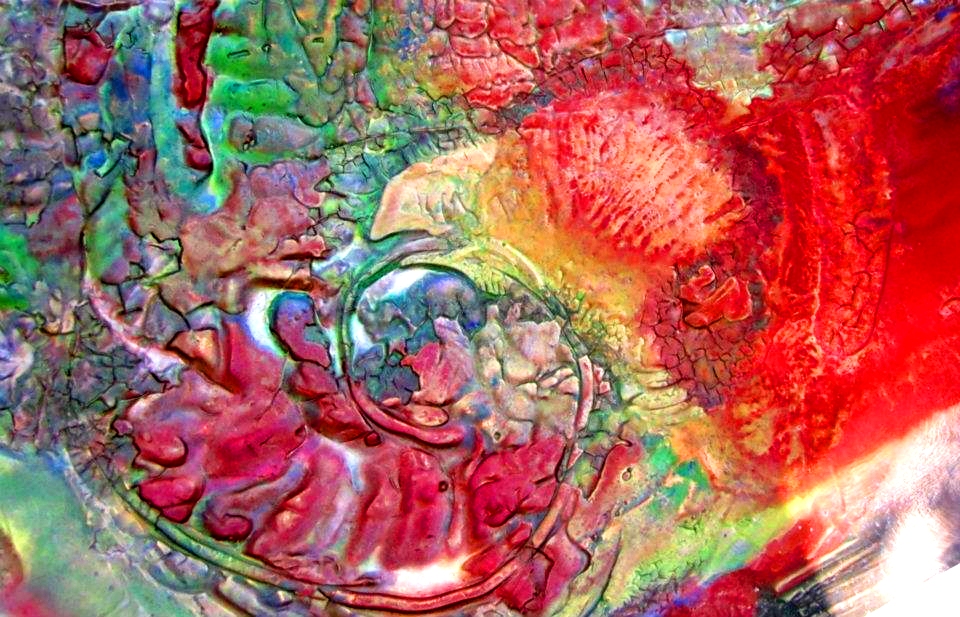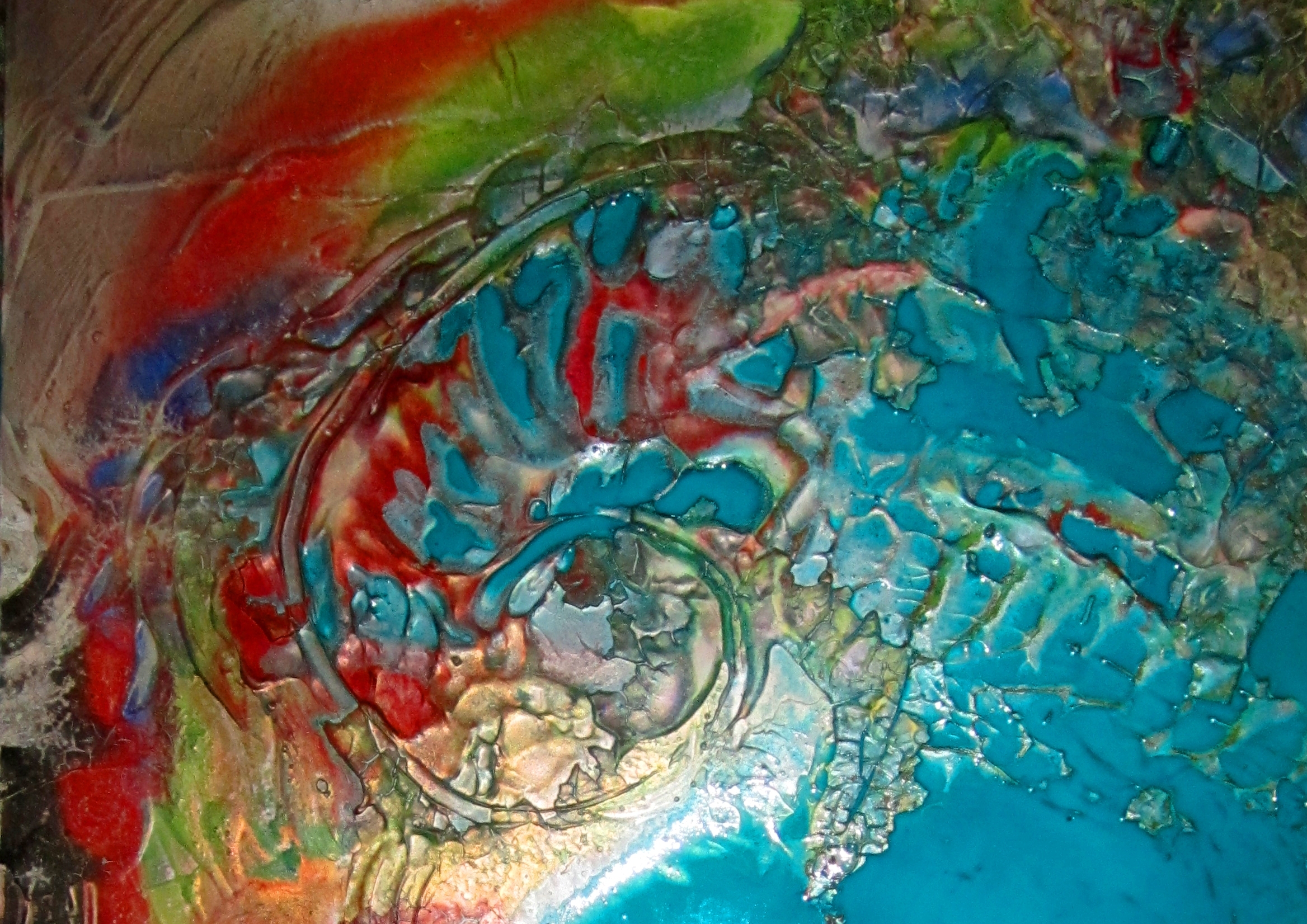
This painting was a salvage operation, from the moment when I discovered that my gesso had been replaced by a cheap impostor wearing the same bucket. The gesso cracked and fell away from the masonite, and I almost gave up on this painting - and painting in general. I didn't though, and just applied more gesso over what was left in this painting. The end result was definitely an interesting surface to apply pigment to, resembling a rocky coastline where a few puzzle-pieces of gesso held on.

My work has always attempted to echo nature, by applying some of the same processes that nature uses - in this case sediment deposition (in addition to fractal field applications), to reproduce alluvial fans, river deltas, and other geological features often found in the natural world.

Pigment is applied in a highly aqueous state by pouring it over a level painting like flood waters, which move over some areas quickly, and others more slowly. Depending on the pigment grain, the individual particles settle at different rates, collecting on the surface in differing concentrations. Just like in nature, this liquid collects from these "rivers and streams" into larger "lakes and seas", which sometimes take days to dry completely in the sun.

Each consecutive layer interacts in unexpected ways with the previous, resulting in a work that was painted by nature. As the artist I just facilitated the various processes it needed to accomplish its magic.
https://blog.yourdesignjuice.com/2021/11/an-artists-life-by-loren-hall/